Across China, more than 50 sprawling ghost cities that were meant to house millions sit eerily abandoned
This new mega city was inspired by a Disney fairytale, with bright pastels and a cartoon-like appearance, but it sits empty as one of China’s eerie ‘ghost cities’.
While Australia continues to grapple with a critical shortage of homes, one of the world’s biggest economies is coming to terms with the exact opposite.
China is home to at least 50 so-called ‘ghost cities’, which combined have as many as 65 million empty homes and apartments within them.
To the naked eye, they look like any other major urban area.
They have countless high rises, each home to hundreds of apartments, surrounded by sprawling parks, opulent monuments and carefully planned roads and highways.
Some of these cities even have neighbourhoods that are replicas of famed locales from around the world, such as Paris, Venice, New York and London.
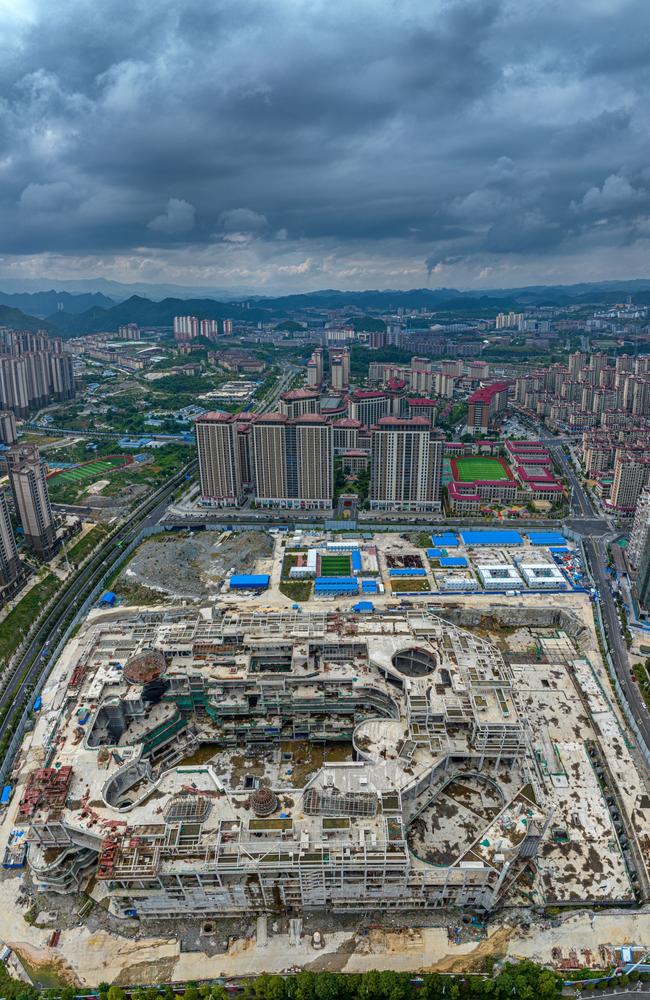
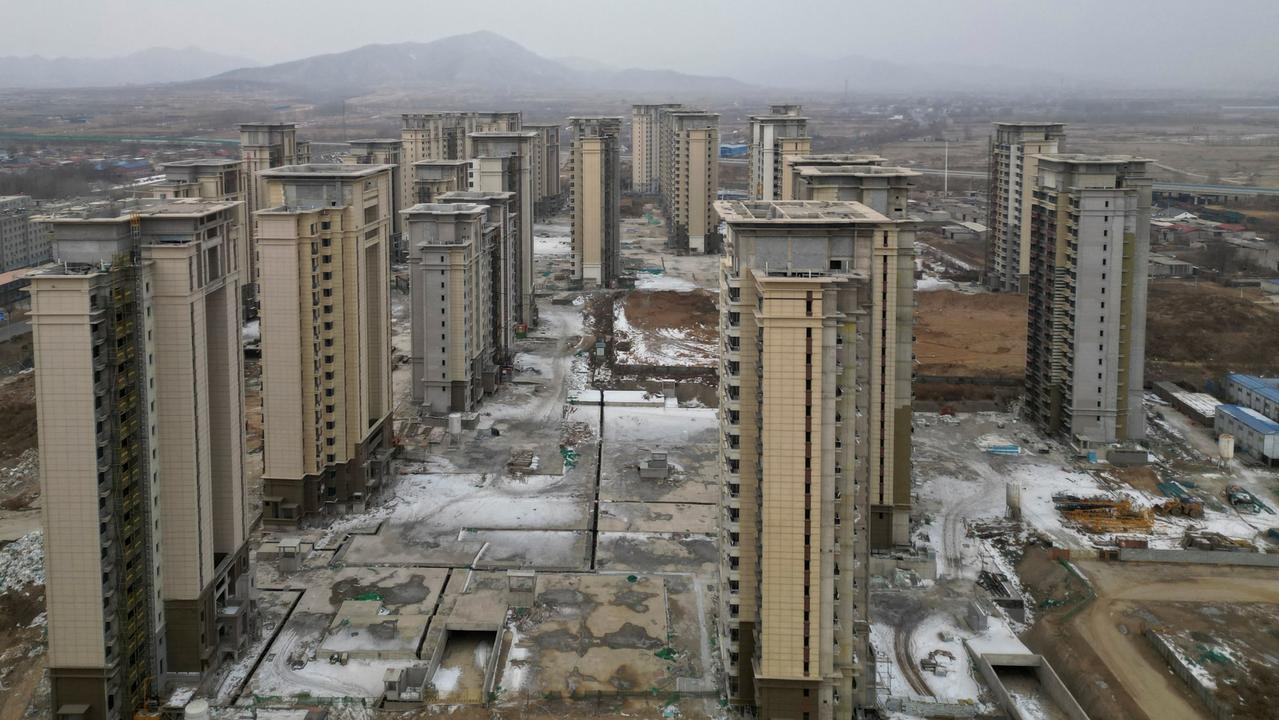
Millions of people were meant to call these sparkling metropolises home, but they largely sit empty; eerie locations beloved by urban explorers, where modern structures are already beginning to crumble.
You’ll find an eye-opening example less than an hour outside the city of Hangzhou on the country’s east coast, in the bizarre city of Tianducheng.
Construction began in 2007 on the development, which was inspired by the French capital and features a replica of the famed Champs Elysee, lined with boutiques and restaurants.
There’s also a 91 metre high perfect copy of the Eiffel Tower, not far from a classic luxury chateau perched on a hill.
More than 10,000 people were expected to settle in the city.
A few hundred are believed to call it home these days and most of the small number of people walking around are bemused tourists.
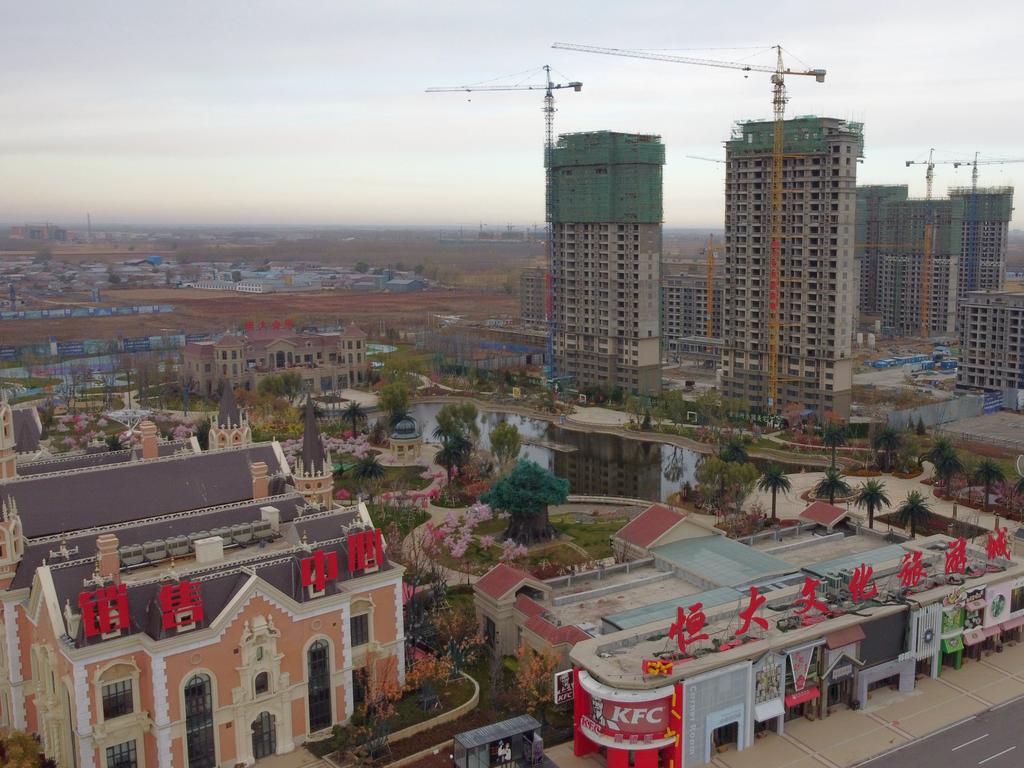

As a result, shopfronts have painted windows so it appears, from a distance at least, that they’re filled with items. Ornate marble and stone statues are used by scant locals to hang up their laundry. Paint has begun to peel and brickwork is cracking.
Ordos is another of China’s ghost cities.
Located in Inner Mongolia, 90,000 acres were rapidly developed into a perfect picture of city living.
Residential towers, commercial skyscrapers, an airport, mammoth shopping centres, large promenades and countless public parks burst out of the desolate landscape on the edge of the Gobi Desert.
Two million people were projected to call Ordos home when complete. All of the scaffolding has long since come down and the city is open, but those millions of people never arrived.
Estimates are that up to 30,000 people are scattered across the landscape, giving Ordos an eerie feeling.
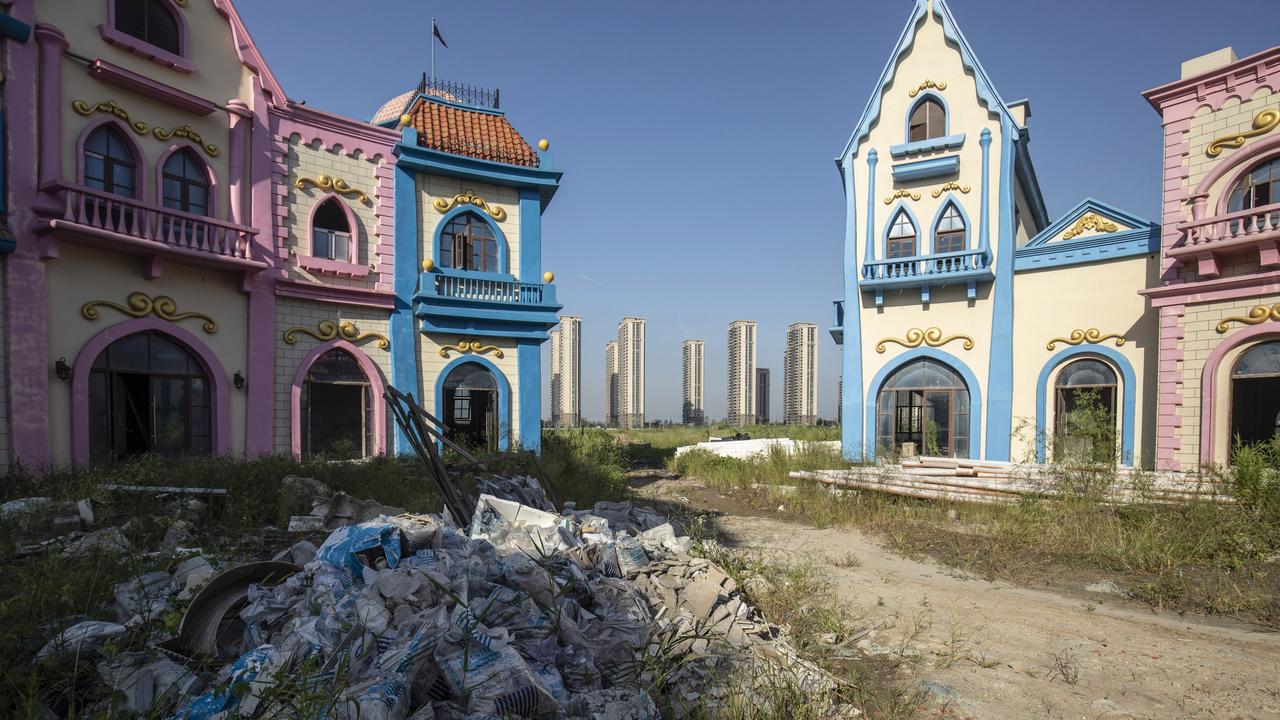
International urban explore Darmon Richter told the British newspaper Express that the city has a “post-apocalyptic” feel that doesn’t compare to anywhere else he’s been.
“Even in Chernobyl you tend to run into other tour groups, or see the furniture rearranged by the countless photographers who’ve visited before you,” Mr Richter said.
“Kangbashi district was utterly untouched though, and walking through the silent streets was an unnerving experience.”

Research published in the academic journal Cities in February outlined how an astronomical boom in construction activity had far outpaced demand in many cases.
As a result, these mega cities with tiny populations are stark to view in person.
“Honggutan, [a] new town in Nanchang City, is home to Asia’s largest fountain square and Ferris wheel but, 14 years after the town was constructed, it had an urban occupancy of only 30 per cent,” the research paper reads.
There are several reasons for these mammoth abandoned cities.
A construction boom kicked off in China in the late 1990s, as part of broader efforts to modernise the economy and transform the country.
Communist Party officials in regional areas green-lit major projects, essentially building entirely new large-scale cities, in order to show their economic growth credentials to secure better jobs in Beijing.
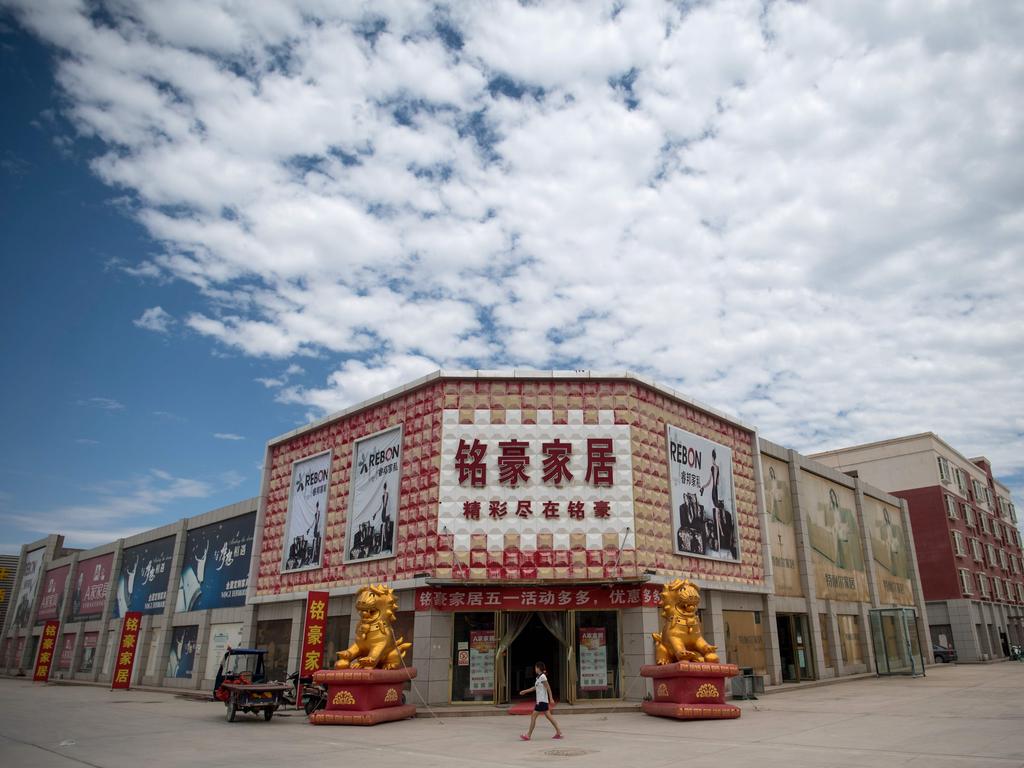
Stimulating the construction industry was also good for the country, creating jobs and spurring on domestic economic growth.
The rapid growth of the middle class also saw hordes of people leave rural areas to make their way to established cities in search of the good life.
To ease pressure on those cities, new urban areas were built in rural areas, with the belief that millions would move back once construction was complete.
It had happened before.
Shenzhen, one of China’s largest cities and incredibly prosperous thanks to its technology industry, was a tiny fishing village not too long ago. Authorities oversaw the rapid development of a major new metropolis that’s flourishing.
But examples like that are few and far between. In dozens of cases right across the country, the people simply never came.
The consequences could be devastating.
In January, a court in Hong Kong ordered that the developer Evergrande – the second-largest in all of China – be liquidated after accruing a staggering two trillion yuan (AU$456 billion) in debt.
Once a shining jewel in the country’s economic crown, the company defaulted on a debt payment, shining a light on its serious problems.
Several hundred projects across the country ground to a halt.
One of them was a Disney fairytale-inspired community, part theme park and part residential enclave, to be replicated at a dozen sites across the country.
None eventuated and now sit abandoned, their bright pastel paint now peeling.
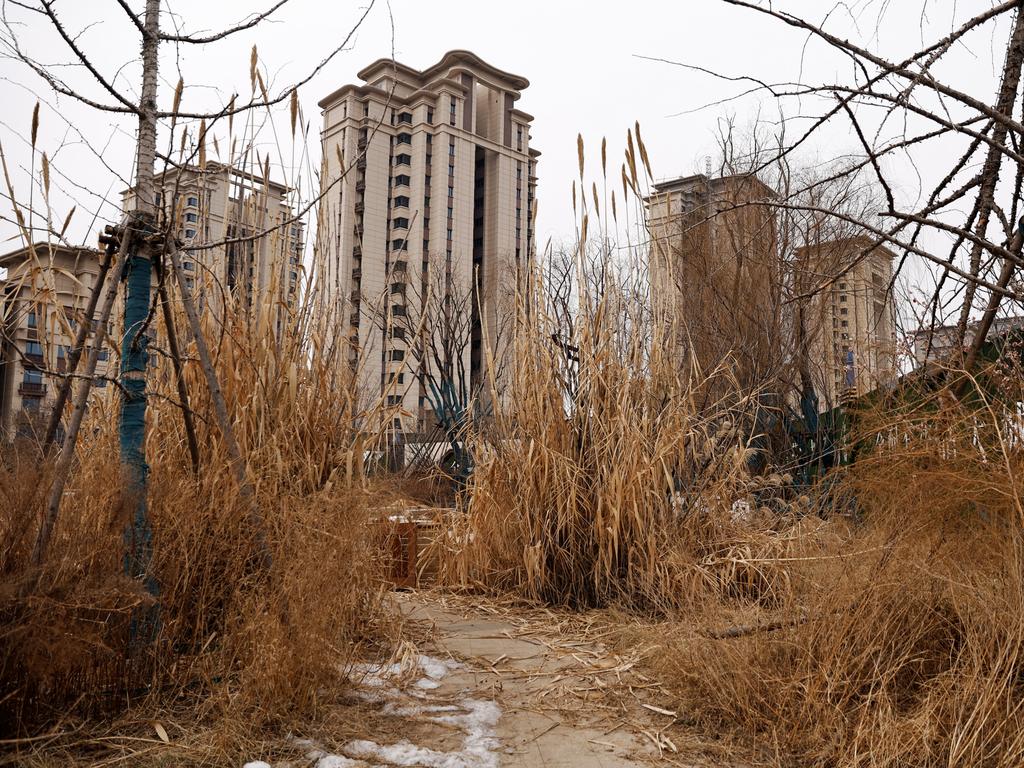
Before the Covid pandemic, real estate accounted for about a third of China’s total GDP and the vast majority of household wealth was tied up in property investments.
Fortunes have soured dramatically since then.
The property market has all but collapsed, there is an unfathomable volume of unsold real estate, and countless ordinary citizens are paying mortgages on investments that may never have tenants.
More Coverage
Financial news outlet Bloomberg estimates that with each five per cent slide in real estate prices, a staggering 19 trillion yuan (AU$3.88 trillion) will be wiped from household wealth.
A few months ago, the government approved a 300 billion yuan (AU$61.2 billion) Central Bank loan to regional governments so they could buy up empty homes.
The hope is that those buildings that haven’t begun to fall apart can be converted into affordable housing for Chinese feeling the economic pinch.






